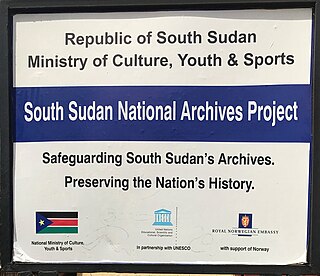Related Research Articles

Arabic is a Central Semitic language of the Semitic language family spoken primarily in the Arab world. The ISO assigns language codes to 32 varieties of Arabic, including its standard form of Literary Arabic, known as Modern Standard Arabic, which is derived from Classical Arabic. This distinction exists primarily among Western linguists; Arabic speakers themselves generally do not distinguish between Modern Standard Arabic and Classical Arabic, but rather refer to both as al-ʿarabiyyatu l-fuṣḥā or simply al-fuṣḥā (اَلْفُصْحَىٰ).
Maghrebi Arabic is a vernacular Arabic dialect continuum spoken in the Maghreb. It includes the Moroccan, Algerian, Tunisian, Libyan, Hassaniya and Saharan Arabic dialects. It is known as ad-Dārija. This serves to differentiate the spoken vernacular from Literary Arabic. Maghrebi Arabic has a predominantly Semitic and Arabic vocabulary, although it contains a few Berber loanwords which represent 2–3% of the vocabulary of Libyan Arabic, 8–9% of Algerian and Tunisian Arabic, and 10–15% of Moroccan Arabic. Maghrebi Arabic was formerly spoken in Al-Andalus and Sicily until the 17th and 13th centuries, respectively, in the extinct forms of Andalusi Arabic and Siculo-Arabic. The Maltese language is believed to have its source in a language spoken in Muslim Sicily that ultimately originates from Tunisia, as it contains some typical Maghrebi Arabic areal characteristics.

Arabization or Arabicization is a sociological process of cultural change in which a non-Arab society becomes Arab, meaning it either directly adopts or becomes strongly influenced by the Arabic language, culture, literature, art, music, and ethnic identity as well as other socio-cultural factors. It is a specific form of cultural assimilation that often includes a language shift. The term applies not only to cultures, but also to individuals, as they acclimate to Arab culture and become "Arabized". Arabization took place after the Muslim conquest of the Middle East and North Africa, as well as during the more recent Arab nationalist policies toward non-Arab minorities in modern Arab states, such as Algeria, Iraq, Syria, Egypt, Bahrain, and Sudan.

Daza is a Nilo-Saharan language spoken by the Daza people inhabiting northern Chad and eastern Niger. The Daza are also known as the Gouran (Gorane) in Chad. Dazaga is spoken by around 700,000 people, primarily in the Djurab Desert region and the Borkou region, locally called Haya or Faya-Largeau northern-central Chad, the capital of the Dazaga people. Dazaga is spoken in the Tibesti Mountains of Chad, in eastern Niger near N'guigmi and to the north. It is also spoken to a smaller extent in Libya and in Sudan, where there is a community of 3,000 speakers in the city of Omdurman. There's also a small diaspora community working in Jeddah, Saudi Arabia.
Nobiin, also known as Halfawi, Mahas, is a Northern Nubian language of the Nilo-Saharan language family. "Nobiin" is the genitive form of Nòòbíí ("Nubian") and literally means "(language) of the Nubians". Another term used is Noban tamen, meaning "the Nubian language".

The Eastern Jebel languages are a small subfamily belonging to the Eastern Sudanic subgroup of Nilo-Saharan. They are spoken in the hills of An Nil al Azraq province in eastern Sudan

Modern Standard Arabic (MSA) or Modern Written Arabic (MWA) is the variety of standardized, literary Arabic that developed in the Arab world in the late 19th and early 20th centuries, and in some usages also the variety of spoken Arabic that approximates this written standard. MSA is the language used in literature, academia, print and mass media, law and legislation, though it is generally not spoken as a first language, similar to Contemporary Latin. It is a pluricentric standard language taught throughout the Arab world in formal education, differing significantly from many vernacular varieties of Arabic that are commonly spoken as mother tongues in the area; these are only partially mutually intelligible with both MSA and with each other depending on their proximity in the Arabic dialect continuum.

The languages of Ethiopia include the official languages of Ethiopia, its national and regional languages, and a large number of minority languages, as well as foreign languages.

Domari is an endangered Indo-Aryan language, spoken by Dom people scattered across the Middle East and North Africa. The language is reported to be spoken as far north as Azerbaijan and as far south as central Sudan, in Turkey, Iran, Iraq, Israel, Palestine, Jordan, Egypt, Sudan, Libya, Tunisia, Algeria, Morocco, Syria and Lebanon. Based on the systematicity of sound changes, it is known with a fair degree of certainty that the names Domari and Romani derive from the Indo-Aryan word ḍom. Although they are both Central Indo-Aryan languages, Domari and Romani do not derive from the same immediate ancestor. The Arabs referred to them as Nawar as they were a nomadic people that originally immigrated to the Middle East from the Indian subcontinent.
Avokaya is a Central Sudanic language spoken in southern South Sudan and parts of the Democratic Republic of Congo.

Sudan is a multilingual country dominated by Sudanese Arabic. In the 2005 constitution of the Republic of Sudan, the official languages of Sudan are Literary Arabic and English.

Chadian Arabic, also known as Shuwa Arabic, Western Sudanic Arabic, or West Sudanic Arabic (WSA), is a variety of Arabic and the first language of 1.6 million people, both town dwellers and nomadic cattle herders. Most of its speakers live in central and southern Chad. Its range is an east-to-west oval in the Sahel. Nearly all of this territory is within Chad and Sudan. It is also spoken elsewhere in the vicinity of Lake Chad in the countries of Cameroon, Nigeria and Niger. Finally, it is spoken in slivers of the Central African Republic. In addition, this language serves as a lingua franca in much of the region. In most of its range, it is one of several local languages and often not among the major ones.
Dongolawi is a Nubian language of northern Sudan. It is spoken by a minority of the Danagla people in the Nile Valley, from roughly upstream to the bend in the Nile near ed Debba. Dongolawi is an Arabic term based on the town of Old Dongola, the centre of the historic Christian kingdom of Makuria. Today's Dongola was founded during the 19th century on the western side of the Nile. The Dongolawi call their language Andaandi "the language of our home".

South Sudan is a multilingual country, with over 60 indigenous languages spoken. The official language of the country is English which was introduced in the region during the colonial era.
Gule, also known as Anej, Fecakomodiyo, and Hamej, is an extinct language of Sudan. It is generally classified as one of the Koman languages. It is poorly attested, and Hammarström judges the evidence to be insufficient for classification as Koman. Others however accept it as Koman, though too poorly attested to be much help in reconstructing that family.
Maba is a Nilo-Saharan language of the Maban branch spoken in Chad and Sudan. It is divided into several dialects, and serves as a local trade language. Maba is closely related to the Masalit language. Most speakers of Maba reside in Chad with 542,000 speakers as of 2019. In 2022 there were 28,000 speakers in Sudan where the language is known as Sulaihab.
Afitti is a language spoken on the eastern side of Jebel el-Dair, a solitary rock formation in the North Kordofan province of Sudan. Although the term ‘Dinik’ can be used to designate the language regardless of cultural affiliation, people in the villages of the region readily recognize the terms ‘Ditti’ and ‘Afitti.’ There are approximately 4,000 speakers of the Afitti language and its closest linguistic neighbor is the Nyimang language, spoken west of Jebel el-Dair in the Nuba Mountains of the South Kordofan province of Sudan.
Yulu is a Central Sudanic language spoken by the Yulu people of South Sudan and the Central African Republic (CAR). It has an estimated 7,000–13,000 speakers.
Ghulfan is a Hill Nubian language spoken in the central Nuba Mountains in the south of Sudan. It is spoken by around 40,000 people in the Ghulfan Kurgul and Ghulfan Morung hills, south of Dilling. The villages in which the language is spoken are Dabri, Karkandi, Katang, Kurgul, Namang, Ninya, Moring, Ota, Shigda, and Tarda. It is closely related to Kadaru, with which it forms the Kadaru-Ghulfan subgroup of Hill Nubian.
Kenzi, also known as Kenuzi, Kunuz, or Mattokki, is a Nubian language of Egypt. It is spoken north of Mahas in Egypt, and is closely related to Dongolawi or Andaandi, a Nubian language of Sudan. The two have historically been considered two varieties of one language. More recent research recognizes them as distinct languages without a "particularly close genetic relationship." With population displacement due to the Aswan High Dam there are communities of speakers in Lower Egypt. Recent linguistic research on the Kenzi language has been conducted by Ahmed Sokarno Abdel-Hafiz.
References
- 1 2 Moseley, Christopher, ed. (2010). Atlas of the World's Languages in Danger. Memory of Peoples (3rd ed.). Paris: UNESCO Publishing. ISBN 978-92-3-104096-2 . Retrieved 2015-04-11.